Understanding the Role of an RBT
Registered Behavior Technicians (RBTs) play a vital role in supporting individuals with autism through Applied Behavior Analysis (ABA) therapy. As paraprofessionals working under the supervision of certified behavior analysts, RBTs implement behavior intervention plans and collect valuable data to promote skill development. This article unpacks how to become an RBT, the professional journey involved, and the importance of ABA therapy in behavioral health services for autism spectrum disorder.
Foundations of Applied Behavior Analysis and Its Role in Autism Support
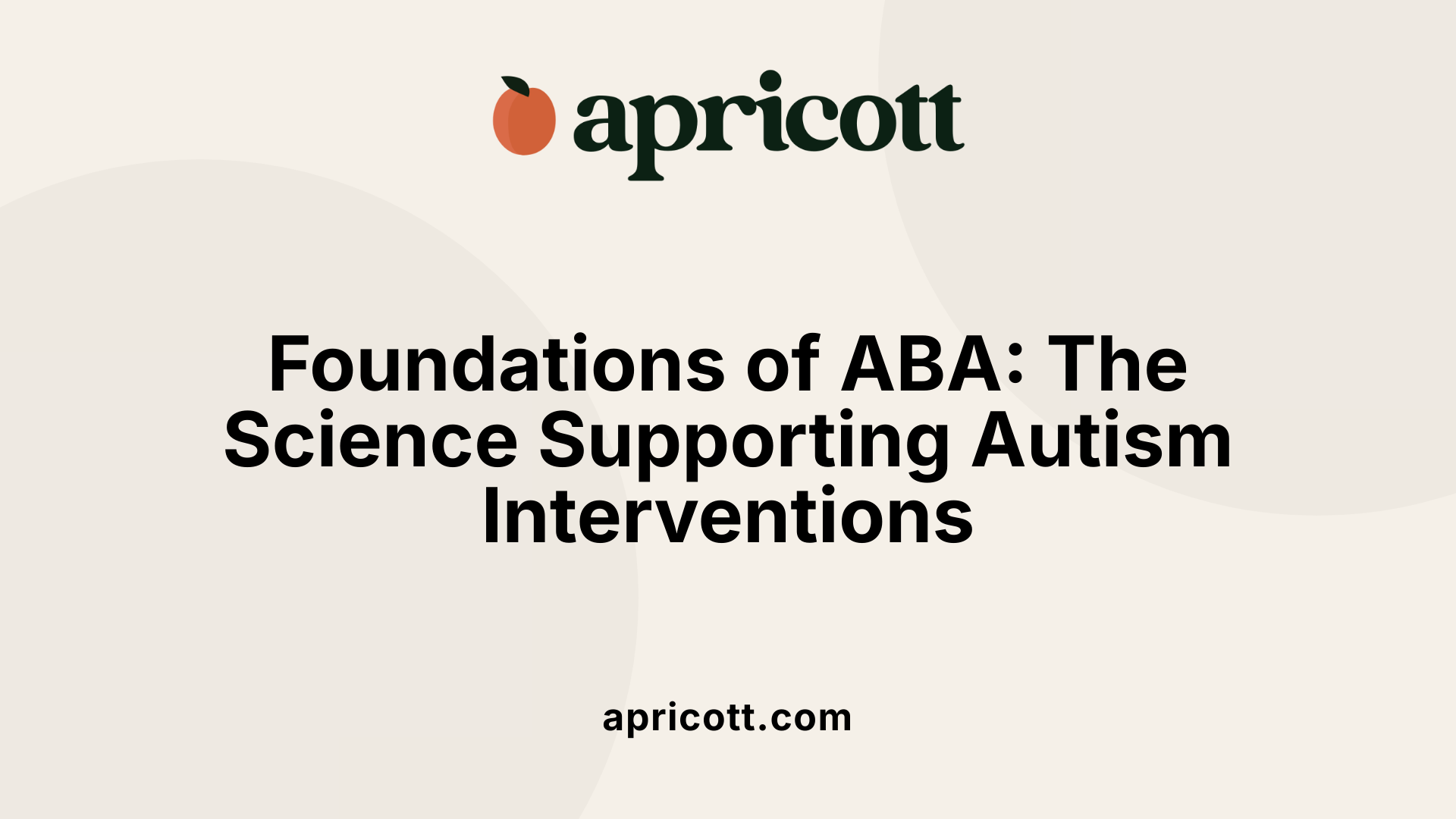
What is applied behavior analysis (ABA) therapy and how is it used to support individuals with autism?
Applied Behavior Analysis (ABA) therapy is a structured and evidence-based approach rooted in the science of learning and behavior. It is primarily used to assist individuals with autism spectrum disorder (ASD) by applying behavioral principles to encourage skill development and reduce behaviors that might interfere with learning or social integration.
ABA programs are individualized and designed by qualified behavior analysts, ensuring each child's unique needs are met. The therapy uses techniques such as positive reinforcement to increase desirable behaviors, and the Antecedent-Behavior-Consequence (A-B-C) model to understand and modify behavior. Typical ABA sessions can be intensive and structured but often incorporate naturalistic and play-based activities, helping children generalize skills across different settings.
What are the typical goals of behavioral analysis therapy for autism?
ABA therapy targets several core areas to improve the daily lives of children with autism. Goals include enhancing communication skills by developing both expressive and receptive language abilities and fostering appropriate social interactions.
Increasing independence is another key goal, covering daily living skills like dressing, toileting, and self-care. ABA also aims at reducing problematic behaviors through positive reinforcement and functional behavior strategies to promote more adaptive responses.
Additionally, ABA helps children acquire community and safety skills such as waiting in lines, recognizing safety signs, and managing money. Cognitive and academic skills are also addressed to support educational progress. Each goal is tailored based on thorough assessments and focuses on meaningful, functional skill acquisition to promote greater independence and improve the overall quality of life for children with autism.
The Role and Qualifications of ABA Therapy Providers

Who provides ABA therapy and what qualifications do they usually have?
ABA therapy is delivered by various professionals, ranging from highly qualified analysts to trained paraprofessionals. The primary providers include Board Certified Behavior Analysts (BCBAs), licensed behavior analysts, and Registered Behavior Technicians (RBTs).
BCBAs typically hold at least a master’s degree in applied behavior analysis or a related discipline. They must pass a rigorous certification exam from the Behavior Analyst Certification Board (BACB) and obtain state licensure where applicable. These analysts design, supervise, and monitor individualized ABA programs.
RBTs, on the other hand, are paraprofessionals who assist in implementing these programs under the supervision of a BCBA. To become an RBT, candidates must be at least 18 years old, have a high school diploma or equivalent, pass a criminal background check, complete a 40-hour BACB-approved training covering ABA fundamentals and ethics, pass a competency assessment conducted by a BCBA or qualified professional, and pass an 85-question BACB-administered certification exam.
Educational and certification requirements
| Provider Type | Education Required | Certification & Training | Role in ABA Therapy |
|---|---|---|---|
| BCBA | Master’s Degree in ABA or related field | BACB Certification and State Licensure | Designs and supervises ABA treatment plans |
| RBT | High school diploma or equivalent | 40-hour BACB-approved training, Competency Assessment, BACB Certification Exam | Implements ABA plans under supervision |
Supervisory roles
BCBAs and qualified supervisors oversee the work of RBTs, ensuring adherence to behavior plans and ethical standards. This supervision includes face-to-face sessions equalling at least 5% of the RBT’s monthly work hours.
Settings where ABA therapy is delivered
ABA therapy is typically offered in clinics, schools, homes, and hospitals. RBTs and BCBAs collaborate across these settings to provide consistent and effective behavioral support, especially for children with autism spectrum disorder.
These structured roles and educational pathways ensure that ABA therapy providers deliver evidence-based, ethical, and high-quality services to those in need.
Differentiating ABA Therapy from Other Autism Interventions
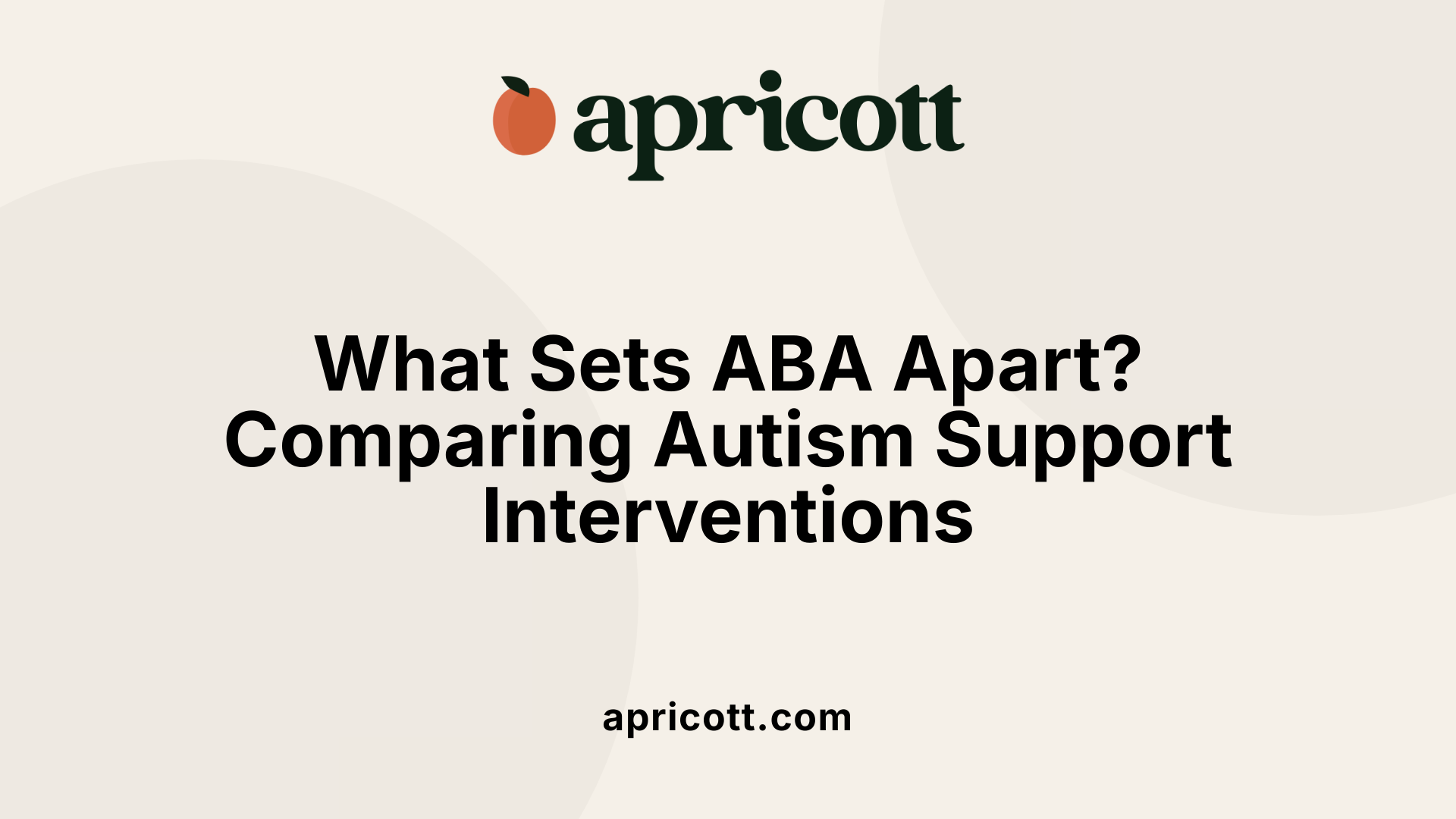
How does ABA therapy differ from other autism therapies?
ABA therapy stands out by focusing on behaviorism, which means it uses measurable and data-driven techniques based on the principles of operant conditioning. This approach targets teaching important social skills like communication and interaction while reducing unwanted behaviors through rewards and reinforcement.
Unlike some therapies such as Occupational Therapy (OT), which work on sensory processing, motor skills, or emotional regulation, ABA zeroes in on observable behaviors and skill growth in different settings. It is highly tailored to each individual, with personalized treatment plans created and adjusted by certified behavior analysts, ensuring that interventions are effective and relevant.
ABA is known for its repetitive, systematic sessions that help reinforce learning consistently over time. This intensity and structure are not typically found in other therapies. Furthermore, ABA therapy's strong backing from scientific research and its use of continuous data collection for progress evaluation make it unique.
In summary, ABA therapy differs from other autism interventions through its scientific methodology, individualized focus on behavior modification, and use of clear, measurable goals to foster meaningful skill development and behavior change.
Navigating Criticisms and Ethical Considerations in ABA Therapy
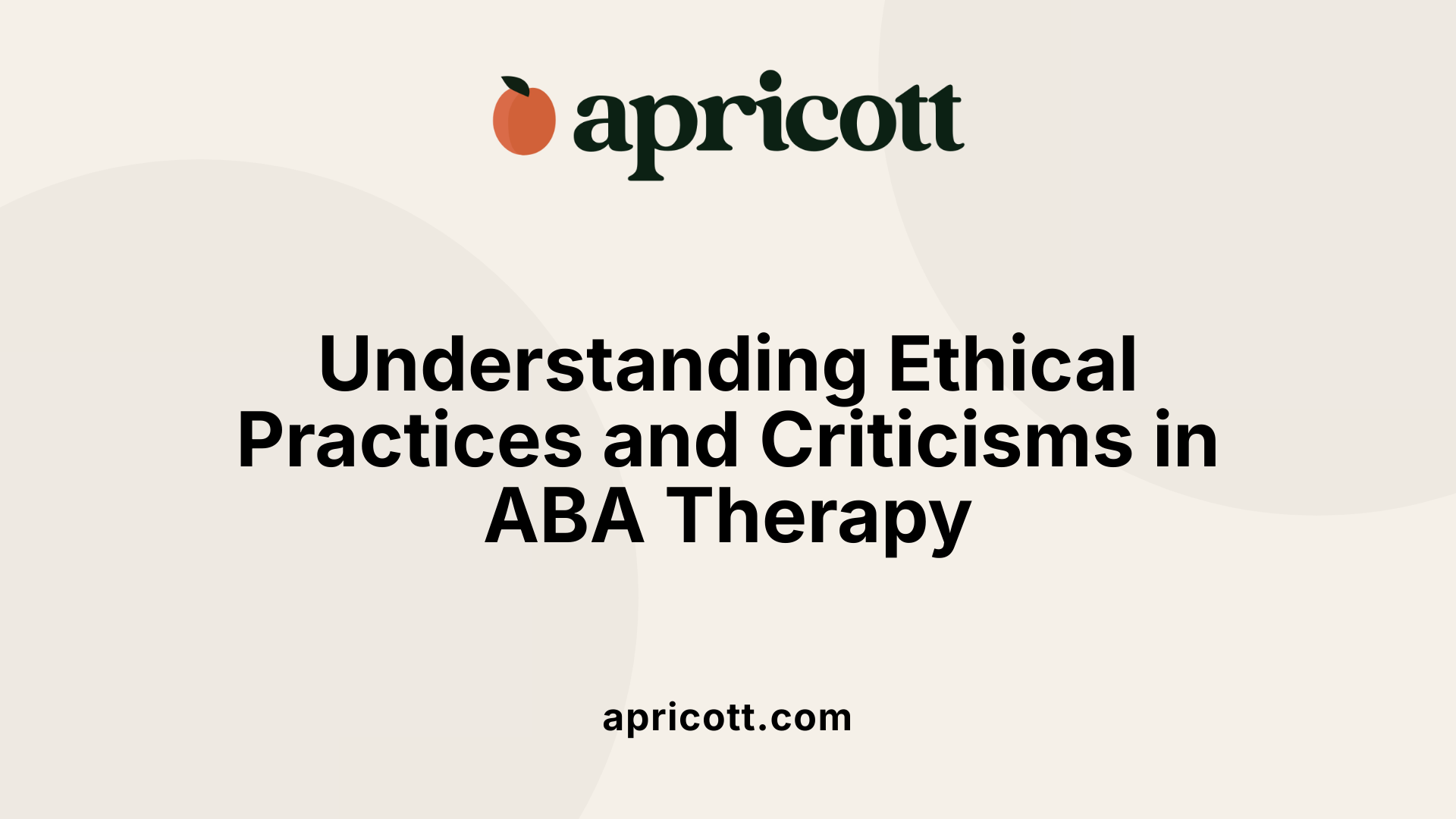
What are some potential criticisms or controversies surrounding ABA therapy?
Applied Behavior Analysis (ABA) therapy has been a cornerstone in supporting children with autism spectrum disorder, but it is not without its controversies. Historically, ABA included aversive methods like electric shocks to reduce certain behaviors, which has contributed to a legacy of distrust. Although modern ABA practices strongly emphasize positive reinforcement and naturalistic approaches, concerns linger that some interventions might still aim to mold behaviors to fit neurotypical norms, potentially undervaluing neurodiversity.
Respect for neurodiversity and emotional well-being
Critics argue that ABA may inadvertently overlook the importance of honoring autistic individuals' unique traits and emotional experiences. Intensive ABA programs have raised worries about causing distress or trauma if they prioritize conformity over the child’s comfort and individuality. This has sparked a broader conversation about ensuring therapy not only targets behavioral improvements but also supports emotional well-being and self-acceptance.
Current ethical standards and child-centered approaches
In response to these concerns, contemporary ABA adheres to stringent ethical standards set by the Behavior Analyst Certification Board (BACB), which mandates child-centered practices and active collaboration with families. Modern RBTs and supervisors are trained to prioritize respectful, humane approaches that focus on meaningful skill development and reducing harmful behaviors while honoring the child's preferences. These ethical guidelines help to balance effective intervention with respect for neurodiversity, reflecting an evolving field sensitive to past mistakes and committed to continual improvement.
Eligibility Requirements to Begin the Journey as an RBT

Minimum age and education
To become a Registered Behavior Technician (RBT), candidates must be at least 18 years old. Additionally, a minimum educational requirement is a high school diploma or its equivalent. This basic educational foundation is essential before progressing to further training.
Background check requirements
Applicants must pass a criminal background check completed within 180 days prior to applying for certification. This ensures the safety and well-being of clients who receive behavior analytic services.
Basic eligibility standards governed by BACB
The Behavior Analyst Certification Board (BACB) governs all eligibility standards to maintain the integrity and professionalism of the RBT certification process. Candidates must meet age and education criteria, successfully finish a 40-hour BACB-approved training course, pass a competency assessment conducted by a qualified BCBA or BCaBA, and then apply through the BACB portal. Meeting these requirements ensures candidates are prepared to perform responsibly under supervision.
By adhering to these eligibility criteria, prospective RBTs embark on a structured and approved certification path with a focus on ethical practice and effective support for individuals receiving behavior analytic services.
Training and Competency Assessment: Essential Steps to Certification

Completion of 40-hour Training Program
To become a Registered Behavior Technician (RBT), candidates must complete a 40-hour training course provided by a BACB-approved instructor. This training is a fundamental requirement and covers the core principles of applied behavior analysis (ABA). It can be conducted online or in-person and typically includes various interactive components such as videos, quizzes, and assignments.
Training Content Based on RBT Task List
The training curriculum strictly follows the RBT Task List outlined by the Behavior Analyst Certification Board (BACB). This ensures that all essential areas are covered, including measurement, assessment, skill acquisition, behavior reduction, and documentation. The comprehensive coverage prepares candidates to competently support behavior intervention under supervision.
Ethics and Professional Conduct
A significant portion of the training, at least 3 hours, is dedicated to ethics and professional conduct. This segment educates candidates on ethical guidelines mandated by the BACB, enabling RBTs to maintain professional integrity and provide ethical behavioral health services.
Competency Assessment by a BCBA or Qualified Professional
After completing the training program, candidates must pass an RBT Competency Assessment. This assessment is conducted by a Board Certified Behavior Analyst (BCBA) or a qualified professional who evaluates the candidate’s ability to apply behavior analytic skills practically. It focuses on essential tasks such as implementing behavior intervention plans, data collection, and following ethical standards.
Successfully passing this assessment is a prerequisite before applying for the RBT certification exam. Together, the training and competency assessment ensure that candidates are well-prepared to work effectively as RBTs in diverse behavioral health settings.
Certification Application, Examination, and Fees
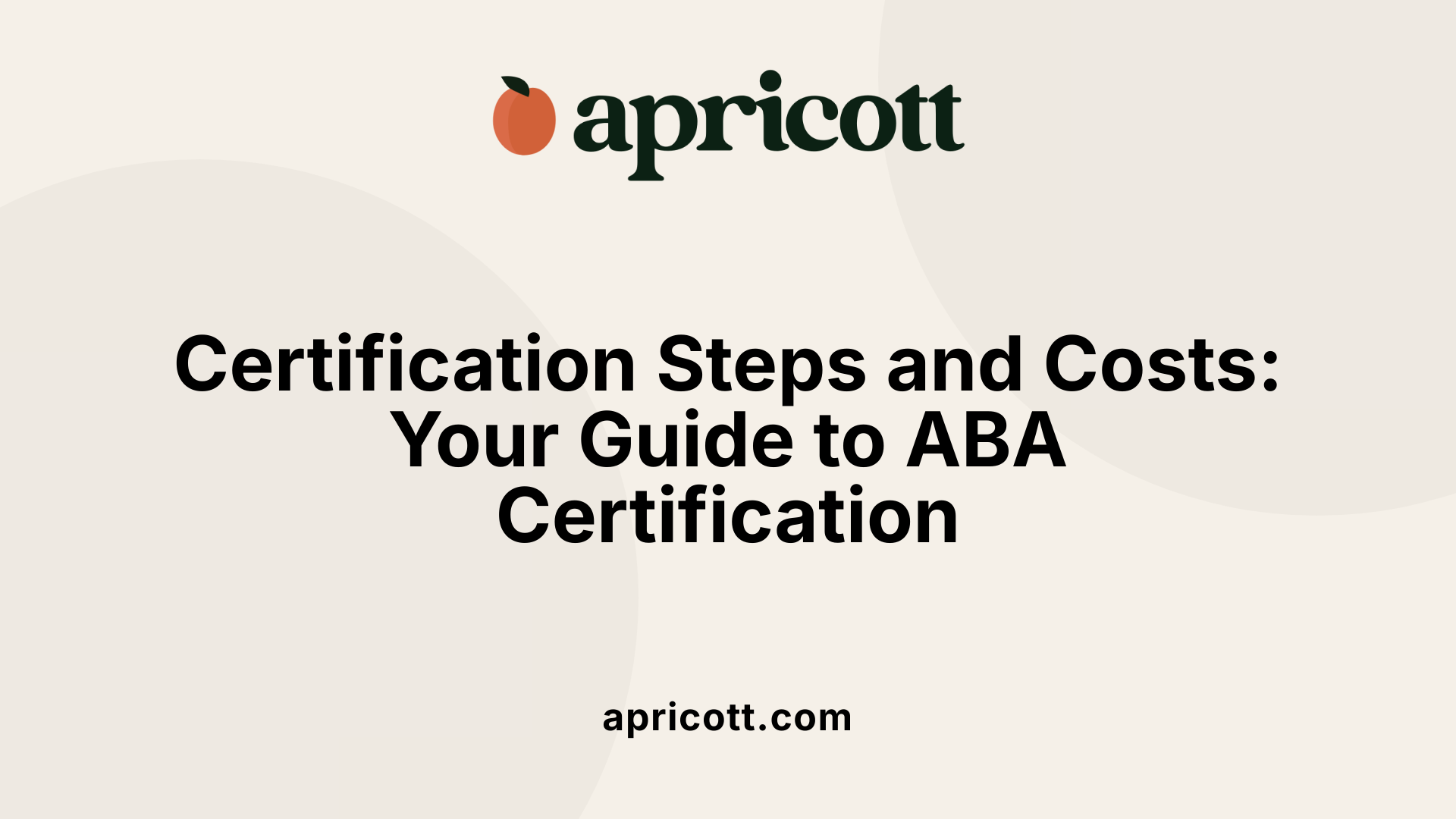
How is the application process completed through the BACB portal?
To become a Registered Behavior Technician (RBT), candidates must apply for certification through the Behavior Analyst Certification Board (BACB) online portal. The application requires submission of proof that they have completed the required 40-hour training program and passed an RBT Competency Assessment conducted by a Board Certified Behavior Analyst (BCBA) or a qualified professional. There is a non-refundable application fee of $50 that must be paid during this process.
What is the exam format and what content does it cover?
After a candidate's application is approved, they must pass the RBT certification exam administered by Pearson VUE. The exam consists of 85 multiple-choice questions. These questions thoroughly assess knowledge of applied behavior analysis (ABA) principles, including measurement and assessment, skill acquisition, behavior reduction strategies, documentation, and professional ethics, particularly those outlined in the RBT Ethics Code. Successfully passing this exam is required to obtain certification.
What are the costs associated with training, application, and the exam?
Training costs can vary widely. Some training providers offer the 40-hour RBT course for free, while others charge several hundred dollars depending on the program's features and options. In addition to training costs, applicants pay a $50 application fee upon submitting their BACB certification application. The examination fee for the RBT test is $45. Some organizations, like Surpass Behavioral Health, offer paid training and certification packages which sometimes include additional benefits such as career mentorship or tuition discounts for future certifications.
How is RBT certification maintained through renewal?
Maintaining RBT certification requires annual renewal. This includes passing a new competency assessment and completing supervision requirements. Supervision involves at least 5% of the RBT's monthly work hours being supervised by a BCBA or qualified professional, including at least two face-to-face supervision meetings per month. Candidates must continue adhering to the ethical standards mandated by the BACB and complete renewal steps to keep their certification active.
The RBT’s Scope of Work and Supervision Requirements
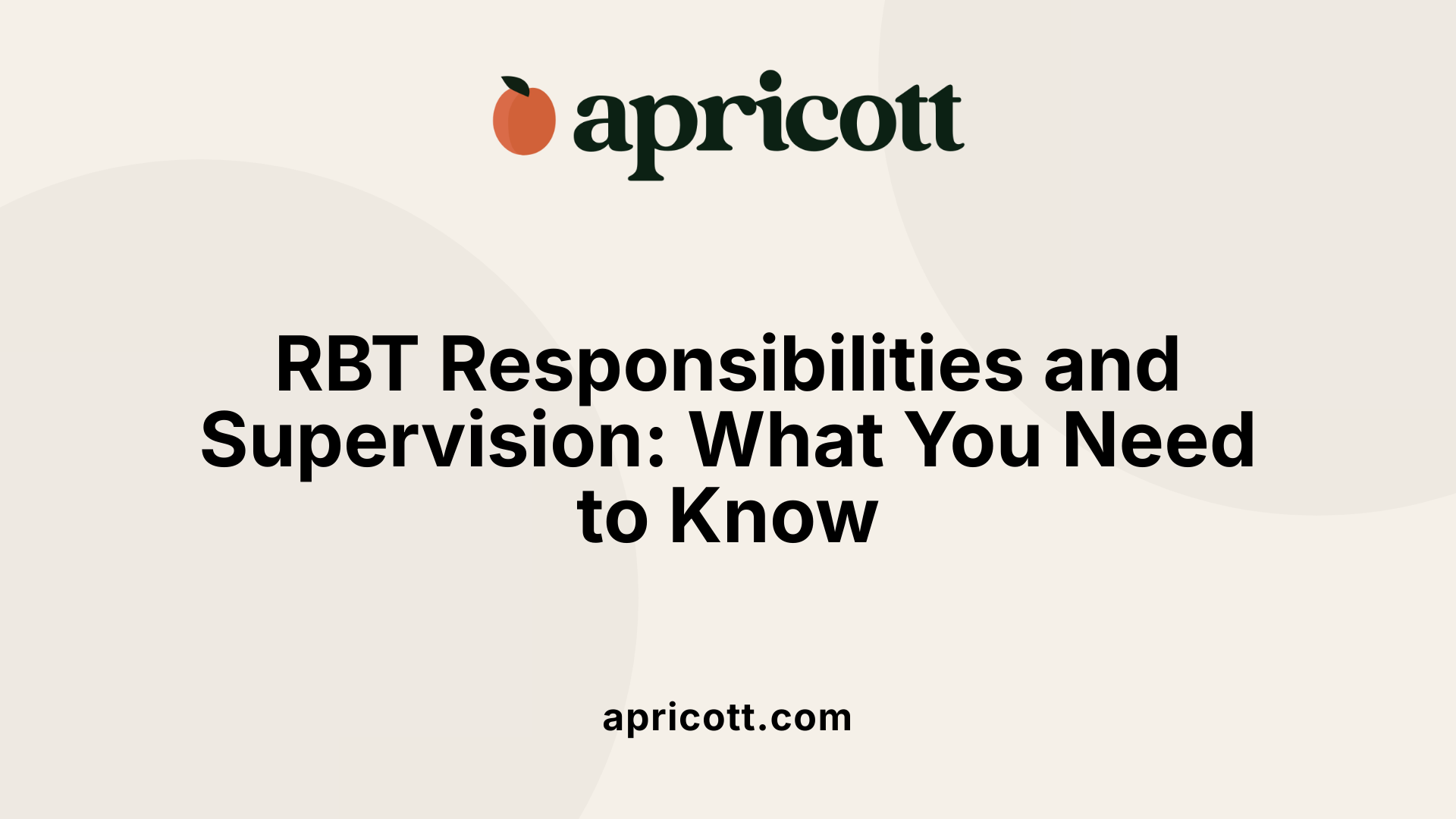
What is the Role of an RBT as a Paraprofessional?
Registered Behavior Technicians (RBTs) are paraprofessionals trained to implement applied behavior analysis (ABA) treatment plans under strict supervision. They work directly with clients, often children with autism spectrum disorder, to support skill development and behavior intervention.
How Are RBTs Supervised by BCBAs?
RBTs operate under the oversight of Board Certified Behavior Analysts (BCBAs) or similarly qualified supervisors. These supervisors design the behavior plans and monitor the RBTs' effectiveness, ensuring that all interventions are carried out correctly and ethically.
What Tasks and Responsibilities Do RBTs Have?
RBT duties include implementing behavior intervention plans, collecting and recording data accurately, and helping clients acquire new skills. However, RBTs do not create behavior plans or perform assessments; these tasks are reserved for their supervising BCBAs.
What Are the Supervision Frequency and Renewal Conditions?
To maintain their certification, RBTs must be supervised for at least 5% of their monthly work hours, which includes a minimum of two face-to-face supervision sessions per month. Annual renewal requires passing a new competency assessment and adherence to the RBT Ethics Code, ensuring ongoing skill development and professional integrity.
Launching Your Career as an RBT: A Pathway to Impactful Autism Support
Becoming a Registered Behavior Technician offers a meaningful career path dedicated to improving the lives of individuals with autism through Applied Behavior Analysis therapy. By meeting eligibility criteria, completing rigorous training, passing competency assessments, and maintaining certification under professional supervision, aspiring RBTs join a respected and growing field. The certification not only opens doors to rewarding job opportunities but also aligns practitioners with ethical standards that ensure quality care. With ongoing professional development and adherence to best practices, RBTs contribute critically to the success of behavioral interventions, helping children with autism acquire vital skills toward greater independence and integration.
References
- Registered Behavior Technician (RBT)
- How to Become a Registered Behavior Technician (RBT)
- How to Become a Registered Behavior Technician
- RBT Certification Requirements and Process
- Breaking Down the Registered Behavior Technician ...
- ABA and other therapies
- Occupational Therapy vs ABA: 4 Key Differences
- ABA Therapy vs CBT for Autism: Which is Better?
- Is ABA Therapy Only for Autism?
.svg)
.svg)








